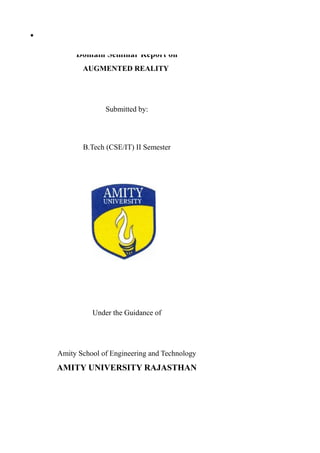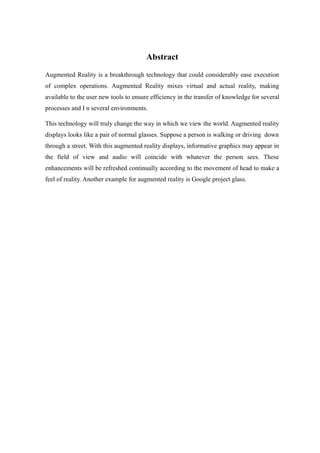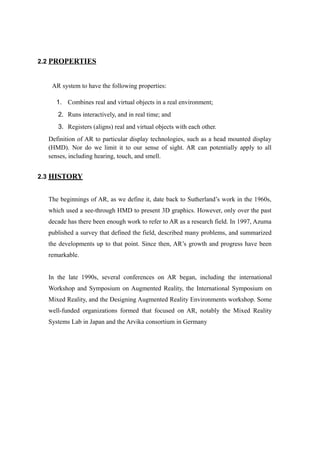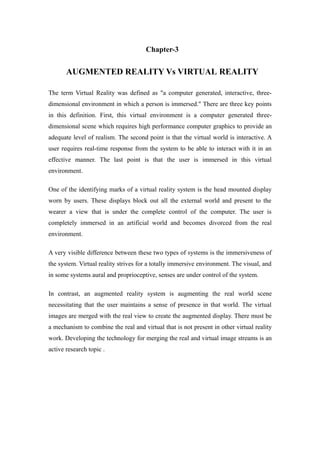This document provides an overview of augmented reality (AR), including its definition, history, differences from virtual reality, display technologies, techniques, components, and potential application domains. It defines AR as combining real and virtual objects in real time and discusses optical and video see-through displays. Example applications mentioned include medical imaging, tourism, manufacturing, and education.


































